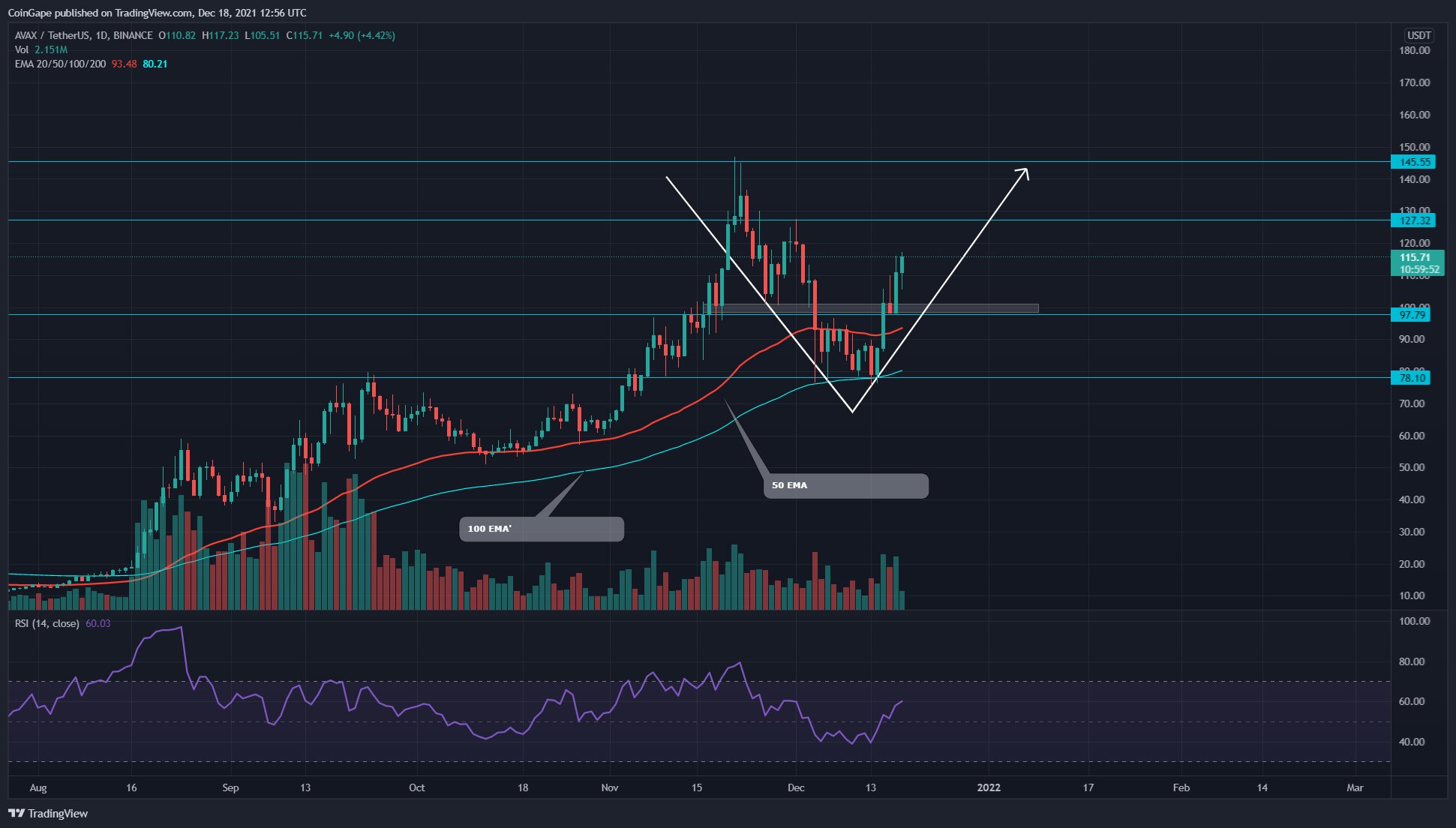Introduction
The world of cryptocurrency has taken the financial industry by storm, revolutionizing the way we perceive and transact with digital assets. From the early days of simple encryption techniques to the complex algorithms powering blockchain technology, the history of cryptography is rich and intriguing.
In this article, we will explore the origins of cryptocurrency and delve into the creation of the most well-known digital currency, Bitcoin. We will unravel the mystery surrounding the anonymous creator of Bitcoin, Satoshi Nakamoto, and shed light on the contributions of other innovators in the field.
Additionally, we will examine the influence of cypherpunks – a group of privacy advocates and cryptography enthusiasts – and how their ideas shaped the development of cryptocurrency. Finally, we will discuss the involvement of governments and regulatory bodies in the world of cryptocurrency.
By the end of this article, you will have a deeper understanding of the fascinating world of cryptocurrency and the individuals who paved the way for this transformative technology.
Early Origins of Cryptography
Cryptography, the art of writing and solving codes, has been a part of human history for centuries. The origins of this field can be traced back to ancient civilizations, where secret codes and ciphers were used to safeguard sensitive information.
One of the earliest known examples of cryptography is the Caesar cipher, named after Julius Caesar. This simple substitution cipher involved shifting each letter in the alphabet a certain number of places. Caesar used this technique to communicate securely with his generals during military campaigns.
As time went on, more elaborate encryption methods emerged. The invention of the printing press in the 15th century spurred the development of more complex ciphers, such as the Vigenère cipher. This polyalphabetic substitution cipher used a keyword to determine the shifting pattern for each letter.
During World War II, cryptography played a crucial role in military operations. The German Enigma machine, a sophisticated device that enciphered and deciphered messages, was considered virtually unbreakable. However, British mathematician and cryptanalyst Alan Turing and his team at Bletchley Park successfully cracked the Enigma code, giving the Allies a significant advantage in the war.
Fast forward to the modern era, and cryptography has evolved exponentially with the advent of computers. The development of public-key cryptography by Whitfield Diffie and Martin Hellman in the 1970s revolutionized the field. This breakthrough allowed for secure communication over insecure channels by using a pair of keys – one public and one private – to encrypt and decrypt messages.
The early origins of cryptography paved the way for the development of decentralized digital currencies like Bitcoin. The idea of using cryptographic techniques to secure transactions and control the creation of new units of currency was first proposed by computer scientist Wei Dai in the late 1990s. His concept, known as “b-money,” laid the foundation for the creation of Bitcoin.
In the next section, we will explore the birth of Bitcoin and the enigmatic figure behind its creation – Satoshi Nakamoto.
The Birth of Bitcoin
In 2008, a whitepaper titled “Bitcoin: A Peer-to-Peer Electronic Cash System” was published under the pseudonym Satoshi Nakamoto. This document outlined the revolutionary idea of a decentralized digital currency that operated on a peer-to-peer network, powered by cryptographic algorithms and a distributed ledger known as the blockchain.
Bitcoin was created to address the flaws and limitations of traditional centralized financial systems. Unlike traditional currencies that are controlled by governments and banks, Bitcoin is not regulated by any central authority. Instead, it relies on the collective power of its network participants, known as miners, to validate and record transactions.
The underlying technology behind Bitcoin is the blockchain, a tamper-proof and transparent public ledger. It records every transaction made with Bitcoin and is maintained by miners who solve complex mathematical problems to add new blocks to the chain. This decentralized system ensures that no single entity has control over the network and provides transparency and security.
On January 3, 2009, the first block of the Bitcoin blockchain, known as the genesis block, was mined by Satoshi Nakamoto. This marked the official launch of Bitcoin and the beginning of a new era in finance. The first transaction, embedded in the genesis block, famously included the message “The Times 03/Jan/2009 Chancellor on brink of second bailout for banks.” This message highlighted the motivation behind Bitcoin’s creation – to provide a decentralized alternative to the traditional banking system.
Bitcoin quickly gained popularity among cypherpunks, tech enthusiasts, and those seeking financial autonomy. Its unique properties, such as limited supply, pseudonymity, and ease of cross-border transactions, attracted an ever-growing user base.
Over the years, Bitcoin has experienced significant price volatility and has been subject to skepticism and scrutiny. However, its impact on the financial world cannot be denied. Bitcoin laid the foundation for the development of thousands of other cryptocurrencies and paved the way for the broader adoption of blockchain technology in various industries.
In the following section, we will dive into the mystery surrounding the anonymous creator of Bitcoin – Satoshi Nakamoto.
Satoshi Nakamoto: Myth or Reality?
One of the most intriguing aspects of Bitcoin is the enigmatic figure behind its creation – Satoshi Nakamoto. However, the true identity of Satoshi Nakamoto remains a mystery to this day. It is unclear whether Satoshi Nakamoto is a single person or a group of individuals.
In the Bitcoin whitepaper and subsequent communications, Satoshi Nakamoto revealed very little personal information. The name “Satoshi Nakamoto” itself is likely a pseudonym, further adding to the mystery surrounding the creator of Bitcoin. Despite numerous attempts to uncover the identity of Satoshi Nakamoto, no conclusive evidence has emerged so far.
Various individuals have been suspected of being Satoshi Nakamoto, including computer scientists, cryptocurrency enthusiasts, and even some well-known public figures. However, all of these claims have been met with skepticism and lack of concrete proof.
One theory that gained significant attention in 2014 was that Australian computer scientist Craig Wright was Satoshi Nakamoto. However, despite Wright’s claim and subsequent media coverage, his proof has been widely questioned and disputed.
The anonymity of Satoshi Nakamoto has its benefits. It allows Bitcoin to exist as a decentralized and trustless system, free from the influence and control of any individual or organization. Additionally, the mystery surrounding Satoshi Nakamoto has given rise to a sense of collective fascination and curiosity within the cryptocurrency community.
While Satoshi Nakamoto may remain a mystery, the impact of their creation, Bitcoin, cannot be denied. It has sparked a global movement towards decentralized currencies and has inspired the development of numerous other cryptocurrencies and blockchain-based applications.
Whether Satoshi Nakamoto’s identity is ever revealed or not, their contribution to the world of finance and technology will continue to be revered. The story of Satoshi Nakamoto serves as a reminder that innovation and disruptive ideas can come from unexpected sources, and it exemplifies the power of decentralized systems and technology.
In the next section, we will explore the significant contributions of other cryptocurrency innovators in shaping the landscape of digital currencies.
The Enigma Behind Satoshi Nakamoto
The identity of Satoshi Nakamoto, the creator of Bitcoin, remains one of the most intriguing mysteries in the world of cryptocurrency. Since the publication of the Bitcoin whitepaper in 2008, Satoshi Nakamoto has vanished without a trace, leaving behind a trail of speculation and fascination.
One of the reasons why the true identity of Satoshi Nakamoto remains elusive is the deliberate efforts made to maintain anonymity. According to early communications and interviews, Satoshi Nakamoto took great care to conceal their identity, using various online personas and encryption techniques to protect their privacy. This anonymity has allowed the focus to remain on the technology itself, rather than the individual behind it.
The enigma behind Satoshi Nakamoto goes beyond their anonymity. It is the brilliance and expertise demonstrated in the Bitcoin whitepaper and the subsequent development of the cryptocurrency. The depth of knowledge displayed in areas such as cryptography, economics, and computer science indicates a level of expertise that is not easily replicated. This has led to speculation that Satoshi Nakamoto may be a collective effort or even a previously unknown genius.
Furthermore, the absence of Satoshi Nakamoto from the public eye has fueled discussions and debates within the cryptocurrency community. Some believe that Satoshi Nakamoto wanted to relinquish control over Bitcoin and ensure that it thrived as a truly decentralized system. By stepping away, Satoshi Nakamoto allowed the community to take ownership and drive the development of the cryptocurrency, free from any individual’s influence.
Despite the mystery surrounding Satoshi Nakamoto’s true identity, their impact on the world of finance and technology cannot be overstated. Bitcoin transformed the way we perceive and interact with money, inspiring the development of countless other cryptocurrencies and laying the foundation for the wider adoption of blockchain technology.
While the identity of Satoshi Nakamoto remains unknown, their legacy lives on. The enigmatic figure behind Bitcoin continues to captivate the imagination of people around the world, reminding us that truly groundbreaking innovations can come from unexpected sources and that technology can transcend individual personalities.
In the next section, we will explore the significant contributions of other innovators in the world of cryptocurrencies and how their work has shaped the landscape of digital assets.
Other Cryptocurrency Innovators
While Satoshi Nakamoto is often revered as the pioneer of cryptocurrency, it is essential to acknowledge the contributions of other notable innovators who have helped shape the landscape of digital currencies.
One such innovator is Vitalik Buterin, the co-founder of Ethereum. Buterin’s vision was to create a platform that allowed for the execution of smart contracts – self-executing agreements without the need for intermediaries. This groundbreaking concept revolutionized the possibilities of blockchain technology beyond just cryptocurrencies. Ethereum became a platform for decentralized applications (DApps) and enabled the development of a vast ecosystem of innovative projects.
Ripple, another significant cryptocurrency, was co-founded by Chris Larsen and Jed McCaleb. Ripple aims to facilitate fast and low-cost international transactions, particularly in the banking sector. It utilizes a unique consensus algorithm known as the Ripple Protocol Consensus Algorithm (RPCA) to validate transactions and maintain the integrity of its network. Ripple has gained traction in the financial industry, partnering with numerous banks and financial institutions worldwide.
Charlie Lee, the creator of Litecoin, also played a crucial role in advancing the realm of cryptocurrencies. He sought to address some of Bitcoin’s limitations, such as transaction speed and scalability. Litecoin implemented several technical improvements, including a different hashing algorithm and faster block generation time, making it a popular alternative to Bitcoin.
Another noteworthy figure is Gavin Andresen, one of the earliest contributors to Bitcoin’s development. Andresen worked closely with Satoshi Nakamoto and played a significant role in shaping the Bitcoin protocol. He took the lead in maintaining Bitcoin Core, the primary software client, and helped drive its adoption and development.
These innovators, along with countless others, have contributed to the ever-evolving landscape of cryptocurrencies. They have introduced new technologies, improved existing blockchain systems, and expanded the potential applications of decentralized digital currencies.
It is important to recognize that the success of cryptocurrencies is not solely attributed to a single individual, but rather to the collective efforts of numerous visionaries and technologists. Their dedication to pushing the boundaries of blockchain technology has paved the way for the widespread adoption and acceptance of digital assets in various industries.
In the following section, we will explore the influence of the cypherpunk movement and its role in shaping the development of cryptocurrency.
The Influence of Cypherpunks
The development of cryptocurrencies owes a debt of gratitude to a group of individuals known as cypherpunks. Originating in the 1980s, the cypherpunk movement advocated for the use of strong encryption and the protection of privacy in the digital realm.
Cypherpunks believed that cryptography was a fundamental tool for defending civil liberties, individual freedom, and maintaining privacy in an increasingly digitized world. They sought to empower individuals by providing them with tools and knowledge to protect their online communications and transactions.
The concepts and philosophies embraced by cypherpunks greatly influenced the creation of Bitcoin and subsequent cryptocurrencies. The ideas espoused by cypherpunks form the foundation of the decentralized and privacy-focused nature of many cryptocurrencies.
One of the key objectives of the cypherpunk movement was to combat censorship and surveillance. They recognized that centralized authorities, such as governments and corporations, often exert control over individuals’ personal information and restrict their freedom of expression. Cryptocurrencies, with their decentralized and pseudonymous nature, undermine this power imbalance by allowing individuals to transact and communicate freely, without the need for intermediaries.
Moreover, the cypherpunks’ emphasis on strong encryption and privacy has shaped the security features of cryptocurrencies. The cryptographic algorithms employed by cryptocurrencies ensure the confidentiality and integrity of transactions, making them resistant to tampering and fraud.
Another important influence of the cypherpunk movement is the concept of decentralized governance. Cypherpunks recognized the potential pitfalls of relying on centralized authorities to establish and enforce rules. Instead, they advocated for systems that were governed by a network of participants, as seen in the consensus mechanisms of many cryptocurrencies today.
Although the cypherpunk movement emerged several decades ago, its influence on the development of cryptocurrencies is still very much alive. The principles of privacy, security, and decentralization espoused by cypherpunks continue to resonate in the cryptocurrency community, inspiring new projects and technologies.
In the next section, we will discuss the involvement of governments and regulatory bodies in the world of cryptocurrency.
Government Involvement and Cryptocurrency
The rise of cryptocurrencies has presented governments and regulatory bodies with new challenges and opportunities in the realm of finance and technology. As digital currencies gained global popularity, governments around the world began to take notice and implement regulations to address various concerns.
Governments have approached cryptocurrency regulation with a variety of stances. Some countries have embraced cryptocurrencies and blockchain technology, recognizing their potential for innovation and economic growth. These forward-thinking governments have established favorable regulatory frameworks, attracting cryptocurrency businesses and fostering a thriving crypto ecosystem.
On the other hand, some governments have taken a more cautious approach, expressing concerns about the potential risks associated with cryptocurrencies. These concerns typically revolve around issues such as money laundering, terrorist financing, tax evasion, and consumer protection. Such governments have implemented stricter regulations, including Know Your Customer (KYC) and Anti-Money Laundering (AML) requirements for cryptocurrency exchanges and businesses.
The role of governments in the cryptocurrency space extends beyond regulation. Some governments have even explored the possibility of creating their digital currencies known as central bank digital currencies (CBDCs). These digital currencies, issued and controlled by central banks, aim to provide a stable and regulated means of digital transactions within a country’s economy.
Moreover, governments have become increasingly interested in the potential of blockchain technology beyond cryptocurrencies. They recognize the value of blockchain’s transparency, security, and efficiency in various sectors, such as supply chain management, healthcare, and voting systems. Some governments have initiated pilot projects and research efforts to explore the integration of blockchain technology into their existing systems.
While government involvement in the cryptocurrency space can provide stability and legitimacy, it is essential to strike a balance between regulation and innovation. Overly restrictive regulations can stifle the growth of the cryptocurrency industry and hinder technological advancements. On the other hand, a lack of regulation can leave the door open for fraud, illicit activities, and market volatility.
As the cryptocurrency market continues to evolve and mature, it is expected that governments will refine their regulatory approaches. Striking the right balance between protecting consumers and fostering innovation will be crucial in harnessing the full potential of cryptocurrencies and blockchain technology.
In the next section, we will conclude our exploration of the world of cryptocurrency and its key contributors.
Conclusion
The world of cryptocurrency has come a long way since the early days of cryptography, with Bitcoin leading the charge as the first decentralized digital currency. The enigmatic figure of Satoshi Nakamoto, the creator of Bitcoin, continues to captivate the imagination of enthusiasts and individuals around the world.
However, the development of cryptocurrencies goes beyond a single individual or entity. It is the collective effort of numerous innovators, such as Vitalik Buterin, Chris Larsen, Jed McCaleb, Charlie Lee, and Gavin Andresen, that has shaped the landscape of digital assets.
The influence of the cypherpunk movement is also evident in the foundational principles of cryptocurrencies – privacy, security, and decentralization. The cypherpunks’ advocacy for strong encryption and protection of civil liberties paved the way for the birth of cryptocurrencies and the revolutionary blockchain technology that underpins them.
Governments and regulatory bodies have recognized the potential of cryptocurrencies and have started to establish frameworks to address concerns related to consumer protection, financial stability, and combating illicit activities. However, finding the right balance between regulation and innovation remains a challenge.
As the cryptocurrency space continues to evolve, the future holds both opportunities and challenges. Innovations in blockchain technology have the potential to revolutionize various industries beyond finance. Governments and regulatory bodies will play a crucial role in establishing regulatory environments that foster innovation while safeguarding the interests of consumers and maintaining financial stability.
In conclusion, the world of cryptocurrency is a testament to the power of human innovation and ingenuity. Whether it is the creation of Bitcoin, the development of alternative cryptocurrencies, or the exploration of blockchain technology, individuals and communities continue to push the boundaries of what is possible in the digital realm.
The journey of cryptocurrencies is far from over, with new technologies, applications, and advancements on the horizon. As we move forward, it is essential to embrace the potential of cryptocurrencies while mitigating the risks and addressing the challenges to ensure a sustainable and inclusive future for this transformative technology.

























